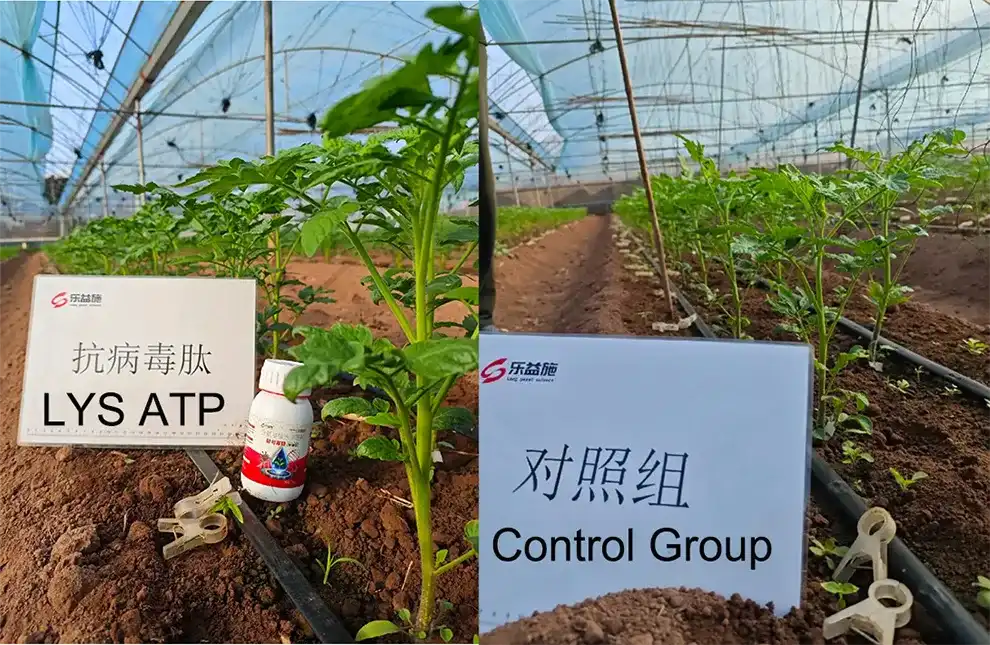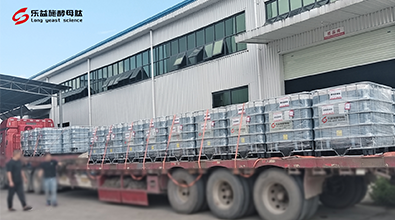Agrochemicals vs Biofertilizers: Which Is Better for Modern Agriculture?
The debate over agrochemicals versus biofertilizers has grown as modern agriculture faces the dual challenge of increasing food production while protecting soil, water, and ecosystem health. Neither input alone can fully meet global agricultural demands. Instead, each offers distinct advantages and limitations that shape its role in crop management. While agrochemicals provide rapid nutrient delivery and effective pest control, biofertilizers contribute to long-term soil health and support sustainable production. Increasingly, farmers are adopting integrated strategies that combine both tools to achieve balanced, resilient, and efficient farming systems.

Understanding Agrochemicals and Their Role in Agriculture
Agrochemicals include a wide range of synthetic inputs such as fertilizers, pesticides, herbicides, and growth regulators. These products have been central to agricultural intensification since the mid-20th century.
Benefits of Agrochemicals
Agrochemicals are valued for their fast and predictable performance. Key advantages include:
- Rapid nutrient supply: Synthetic fertilizers deliver nitrogen, phosphorus, and potassium in forms immediately available to plants.
- Effective pest and disease control: Pesticides and herbicides safeguard crops from yield-reducing weeds, insects, and pathogens.
- Increased crop uniformity: Consistent nutrient availability promotes stable yields across large-scale operations.
- Reduced risk under climate instability: Agrochemicals help maintain output even when weather patterns negatively affect crop growth.
These contributions have played a crucial role in meeting global food needs.
Drawbacks and Environmental Concerns
Despite their advantages, agrochemicals pose notable challenges:
- Soil degradation: Long-term chemical dependence may reduce organic matter and microbial diversity.
- Water contamination: Runoff can introduce nitrates, phosphates, and pesticide residues into rivers and groundwater.
- Pest resistance: Overuse of pesticides accelerates resistance development, reducing long-term effectiveness.
- Residue concerns: Improper application may lead to chemical traces on harvested crops.
These limitations highlight the need to balance synthetic inputs with biological solutions.

The Rise of Biofertilizers: A Sustainable Alternative?
Biofertilizers are microbial-based products containing beneficial bacteria, fungi, or algae that support natural nutrient cycling. They are increasingly viewed as essential tools for sustainable agriculture.
How Biofertilizers Work
Biofertilizers enhance soil biological activity using natural mechanisms. Specifically, microorganisms such as Rhizobium, Azotobacter, and cyanobacteria contribute by fixing atmospheric nitrogen, while genera like Bacillus and Pseudomonas solubilize bound phosphates, thereby improving nutrient availability. Additionally, these microbes produce phytohormones that stimulate root growth and secrete polysaccharides that improve soil aggregation. Moreover, they can activate plant defense responses, which further aids in developing stress tolerance. Together, these processes work synergistically to support plant health and sustainable soil fertility.
Certain modern formulations also combine microorganisms with bioactive compounds such as yeast-derived peptides, amino acids, and nucleotides. These molecules can support cell repair, enhance nutrient uptake efficiency, and improve plant recovery from drought or salinity without relying on synthetic chemicals.
Advantages of Biofertilizers
Biofertilizers offer several long-term benefits.they continuously enhance soil fertility by increasing microbial diversity. This process not only improves nutrient use efficiency and gradually reduces reliance on chemical fertilizers but also promotes balanced absorption of micronutrients and macronutrients by crops, thereby improving agricultural product quality. Furthermore, compared to synthetic inputs, biofertilizers significantly reduce the environmental footprint of agricultural systems. Furthermore, when inoculated with specific functional strains (such as drought-tolerant or salt-tolerant microorganisms), they can further enhance crop resistance to abiotic stresses, achieving sustainable resilience in agricultural production.
Limitations to Consider
Despite their numerous benefits, biofertilizers are not without challenges. One of the essential confinements is their slower and less predictable performance compared to engineered fertilizers and agrochemicals, especially in impoverished or debased soils where microbial activity is constrained. Natural variables such as temperature, pH, and dampness levels can enormously impact their viability. Besides, since biofertilizers contain living beings, they frequently have shorter rack lives and require appropriate storage conditions to stay practical. Off-base application methods can moreover decrease their productivity, as microorganisms require appropriate conditions to establish themselves in the soil. Agriculturists must hence receive appropriate administration, checking both natural conditions and soil science to guarantee ideal outcomes.

Integrated Nutrient Management: Using Both Approaches Wisely
Rather than choosing between agrochemicals and biofertilizers, modern agriculture increasingly favors Integrated Nutrient Management (INM)—a framework that combines synthetic and biological inputs.
Key Principles of INM
Integrated nutrient management is based on several core principles:
- Balanced use of organic, biological, and inorganic nutrients
- Site-specific nutrient planning based on soil tests
- Crop rotation and diversification to maintain soil ecology
- Precision application to reduce losses and environmental impact
- Regular monitoring of soil biological and chemical indicators
Benefits of the Integrated Approach
By adopting INM, farmers can potentially:
- Optimize nutrient use efficiency
- Reduce overall chemical inputs
- Improve soil health and biodiversity
- Enhance crop resilience to stress
- Achieve more consistent yields over time
Implementing INM Successfully
Successful implementation of integrated nutrient management requires:
- Soil testing and analysis
- Crop-specific nutrient planning
- Proper timing and placement of inputs
- Regular monitoring and adjustments
- Ongoing education and training for farmers
By carefully adjusting agrochemicals and organic approaches, agriculturists can work towards more feasible and beneficial rural systems.

Conclusion
In the discussion of agrochemicals vs biofertilizers, the choice is not about replacing one with the other. Both play essential roles in modern agriculture. Agrochemicals remain indispensable for meeting immediate nutrient demands and controlling pests, while biofertilizers support long-term soil health, resilience, and environmental sustainability.
The most effective path forward lies in strategically integrating both approaches. By combining synthetic inputs with microbial solutions and bioactive compounds—such as yeast-derived peptides, amino acids, and nucleotides—farmers can optimize crop performance while maintaining soil health and reducing ecological impacts.
As agriculture continues to evolve, science-driven nutrient management strategies will be crucial for feeding a growing global population sustainably.
FAQs
Q1: Are biofertilizers completely safe and free from any negative impacts?
A: Whereas biofertilizers are by and large considered more secure and more ecologically neighborly than engineered agrochemicals, they are not without potential dangers. Inappropriate application or utilize of sullied items can lead to issues. It's critical to source biofertilizers from legitimate producers and follow legitimate application guidelines.
Q2: Can agrochemicals and biofertilizers be used together on the same crops?
A: Yes, agrochemicals and biofertilizers can frequently be utilized complementarily as part of a coordinated supplement administration technique. Be that as it may, it's significant to get the intelligence between different items and time applications suitably to maximize benefits and dodge potential conflicts.
Q3: How long does it take to see results from biofertilizers compared to agrochemicals?
A: By and large, agrochemicals give more prompt results, whereas the impacts of biofertilizers may take longer to gotten to be clear. Agrochemicals can have impacts within days or weeks, whereas biofertilizers may require a full growing season or longer to illustrate their full benefits, especially in terms of soil wellbeing improvements.
![]()
Innovative Agrochemical and Biofertilizer Solutions for Modern Agriculture | LYS
At LYS Biotech, we understand the complex needs of modern agriculture. Our innovative product line bridges the gap between traditional agrochemicals and cutting-edge biofertilizers, offering solutions that maximize crop yields while promoting long-term soil health and sustainability. Whether you're a manufacturer looking to enhance your product formulations or a large-scale farmer seeking to optimize your nutrient management strategy, we have the expertise and products to help you succeed. Contact us at alice@aminoacidfertilizer.com to explore how our advanced fertilizer technologies can revolutionize your approach to crop nutrition and protection. Let LYS be your partner in achieving higher yields, improved crop quality, and more sustainable agricultural practices.
References
1. Smith, J. & Johnson, M. (2022). "Comparative Analysis of Agrochemicals and Biofertilizers in Modern Agriculture." Journal of Sustainable Farming, 15(3), 78-92.
2. Patel, R. et al. (2021). "Integrated Nutrient Management: Balancing Synthetic and Biological Inputs for Optimal Crop Production." Agricultural Systems, 188, 103028.
3. Zhang, L. & Liu, Y. (2023). "Long-term Effects of Biofertilizers on Soil Health and Crop Productivity: A Meta-analysis." Soil Biology and Biochemistry, 170, 108697.
4. Brown, K. (2022). "The Economics of Transitioning to Biofertilizers in Large-Scale Agriculture." Agricultural Economics Review, 33(2), 201-215.
5. Gonzalez, M. & Rodriguez, S. (2023). "Innovations in Agrochemical Formulations for Enhanced Efficiency and Reduced Environmental Impact." Journal of Agricultural and Food Chemistry, 71(18), 5932-5944.
6. Kumar, A. et al. (2021). "Global Trends in Biofertilizer Development and Application: Challenges and Opportunities." Frontiers in Plant Science, 12, 637020.

Tell us your needs — we’ll provide the right solution for your crops and markets.

Innovating Agriculture with Yeast-Derived Amino Acid Peptides


